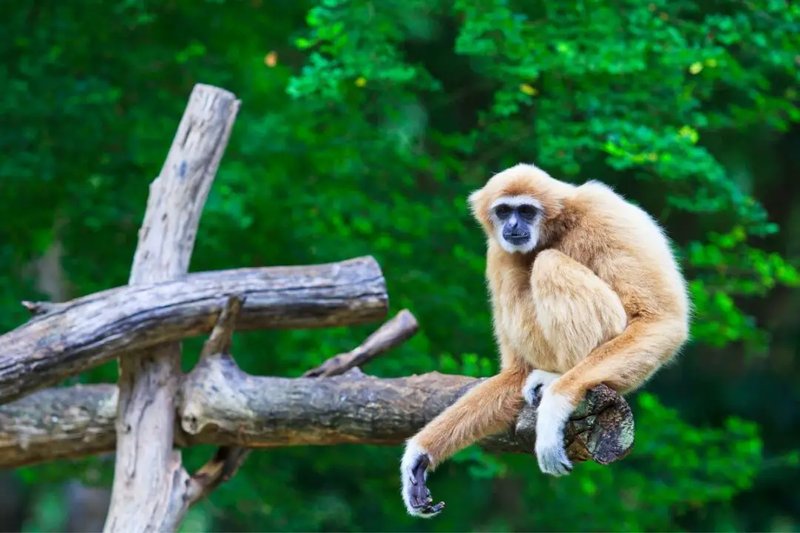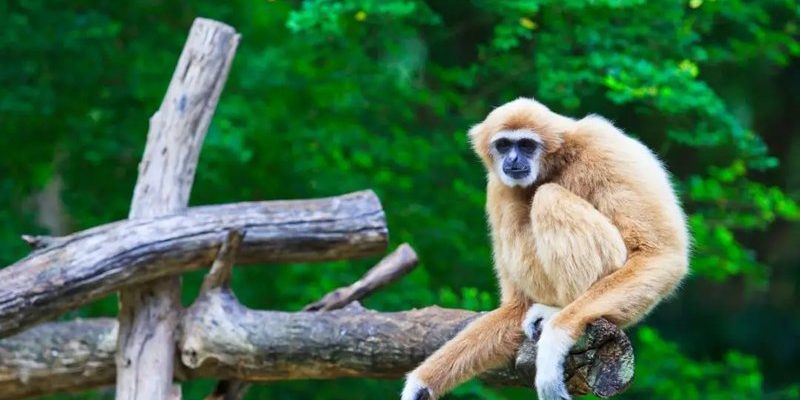
Imagine walking through a lush forest, listening to the melodic calls of gibbons echoing around you. It’s a little like a concert in nature, isn’t it? Just as a concert has different instruments playing together, the animal kingdom boasts various species that, while appearing similar at first glance, have unique characteristics that set them apart. So, grab your favorite drink, and let’s dive into this fascinating world of animals similar to gibbons!
1. Siamang
The siamang is often considered the *closest relative* to the gibbon. Known for its *distinctive throat sac*, which allows it to produce deep, resonant calls, the siamang is a true performer in the animal world. Standing at about 3 feet tall, these primates are larger than most gibbons, making them easier to spot in the wild.
One of the main differences between gibbons and siamangs is their vocalizations. While gibbons have a varied, melodic song, siamangs have a booming, almost *bass-like call* that resonates through the jungle. If you hear a low, powerful sound, it might just be a siamang showing off its vocal talents. Plus, their black fur can sometimes make them look like a small shadow swinging through the trees.
2. Lar Gibbon
The lar gibbon is another close cousin of the typical gibbon. These primates are mostly found in the tropical forests of Southeast Asia and are known for their playful behaviors and climbing skills. They have a lighter, more *colorful coat* compared to the darker-haired siamangs.
What sets lar gibbons apart is their social structure. They often live in small family groups and exhibit a unique form of *duet singing* between mates. This creates a beautiful harmony that can be heard from a distance. If you’re ever in a forest and hear a melodious duet, you might just be lucky enough to spot a pair of lar gibbons bonding through their music.
3. White-Handed Gibbon
The white-handed gibbon, also known as the *lar gibbon*, is a fascinating species that showcases a striking contrast in its appearance. While its body is typically dark brown or black, the hands and feet stand out with their pale coloring, giving it a distinctive look.
In terms of habitat, white-handed gibbons prefer forested areas with plenty of trees for swinging. They’re expert acrobats and can travel up to 30 feet in a single swing! If you see a small gibbon with *light-colored hands* darting among the treetops, you can be fairly certain it’s a white-handed gibbon.
4. Capuchin Monkey
You might think of capuchin monkeys as just the mischievous sidekick in movies, but they have surprising similarities to gibbons. Both animals are agile and incredibly intelligent. Capuchin monkeys have long arms and can move gracefully through the tree branches, just like gibbons.
However, you can spot a capuchin by its *facial features*. They have a rounded, expressive face with a distinctive coloration—often a mix of cream and brown fur, which can contrast with the solid black or brown coats of gibbons. If you see a monkey that looks a little cheeky and curious, it’s likely to be a capuchin.
5. Spider Monkey
Spider monkeys are known for their *long limbs and prehensile tails*, which they use much like a fifth limb. This gives them a significant advantage when swinging between branches. Although they may seem similar to gibbons, spider monkeys are typically larger and have a much different style of locomotion.
When identifying a spider monkey, look for their *long, slender body type* and the distinctive way they use their tails to grab onto branches while swinging. This unique adaptation allows them to navigate through canopies with ease. If you notice a monkey with a tail wrapped tightly around a branch, you’re likely observing a spider monkey.
6. Tamarin
Tamarins are small, captivating primates that often sport vibrant fur patterns and lively personalities. While they’re much smaller than gibbons and have a more compact build, their energy and social behavior can remind you of gibbons in many ways.
Unlike the long limbs of gibbons, tamarins have shorter arms and legs, but they make up for it with their *playful nature*. Watch them as they leap from branch to branch—they’re full of life! If you spot a tiny monkey with *fluffy fur and a curious gaze*, it’s likely a tamarin having a great time in its treetop playground.
7. Gelada Baboon
You might not think of geladas as relatives of gibbons, but they do share some traits. These baboons are known for their *remarkable climbing abilities* and spend a lot of time in trees. However, geladas are notably larger and have a very different diet, mainly consisting of grass.
What’s striking about geladas is their *unique facial features*, including a large patch of red skin on their chests. When you see a group of geladas sitting together, their deep red coloration is hard to miss. If you encounter a baboon with a “necklace” of bright red, you can bet it’s a gelada, keeping a lookout for nearby threats while munching on their favorite grass.
8. Mandrill
Mandrills are another species that, while resembling gibbons in terms of agility, couldn’t be more different in their appearance. With *vivid blue and red facial markings*, they certainly stand out in the animal kingdom.
Mandrills are much larger than gibbons, and while they do climb, they spend a good amount of time on the ground as well. If you’re ever in the rainforest and see a big, colorful monkey with a *bold face*, you might be looking at a mandrill rather than a gibbon.
9. Squirrel Monkey
Squirrel monkeys are small and energetic, much like gibbons, and they have a mischievous glint in their eyes. Their lovely golden fur and playful behavior immediately draw attention. However, unlike gibbons, squirrel monkeys have short limbs and tend to stay in groups.
If you see a monkey darting around with a lot of energy, making quick movements, it’s likely a squirrel monkey. Their lively antics may remind you of the playful nature of gibbons, but their size and fur color set them apart.
10. Colobus Monkey
Colobus monkeys are unique in that they have *specialized adaptations* for leaf-eating. Their long limbs help them swing gracefully through the trees, similar to gibbons, but you can tell them apart by their distinctive black and white fur patterns.
Colobus monkeys have a more robust body compared to gibbons, and their lack of thumb sets them apart. If you spot a *black-and-white monkey* hanging from a branch while munching leaves, you’re likely observing the elegant colobus monkey rather than a gibbon.
In summary, the world of animals similar to gibbons is diverse and fascinating. By learning about these creatures and how to tell them apart, you can appreciate the vibrant life that exists in our forests and jungles. Whether it’s the playful antics of a tamarin or the melodious songs of a lar gibbon, each animal has its own unique charm. So, next time you’re out exploring nature, keep an eye out for these incredible creatures and marvel at the wonders of evolution in action.

